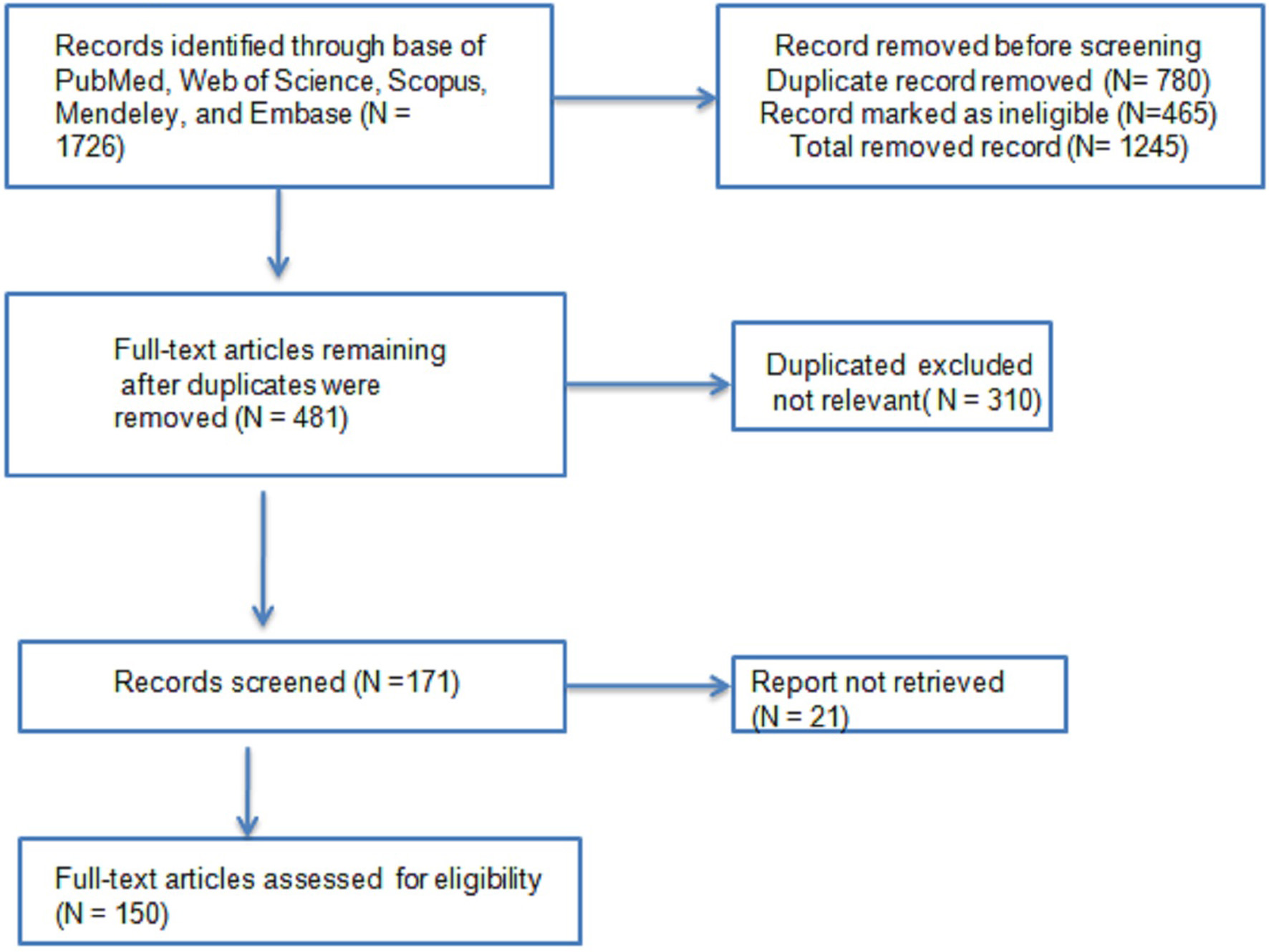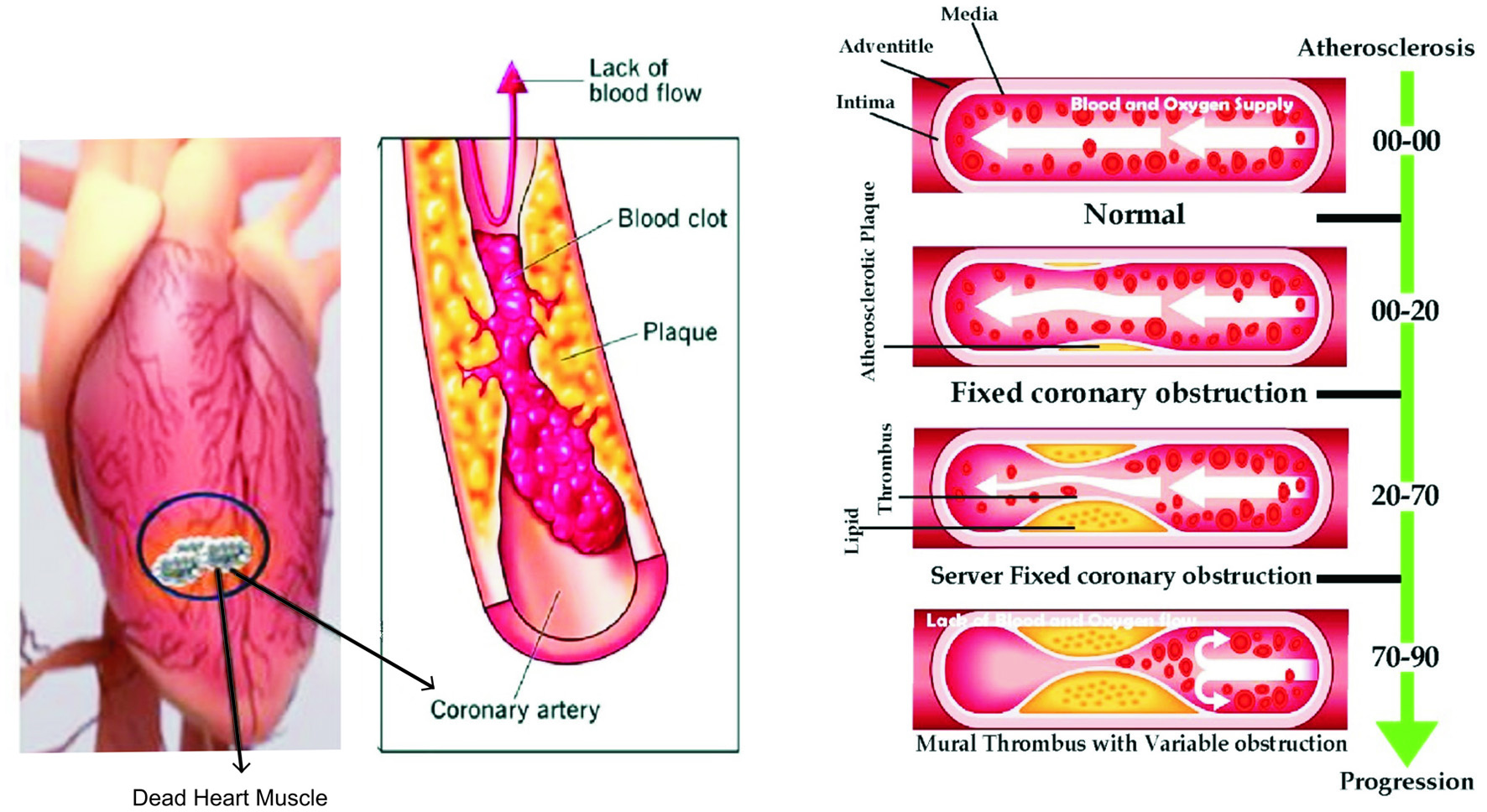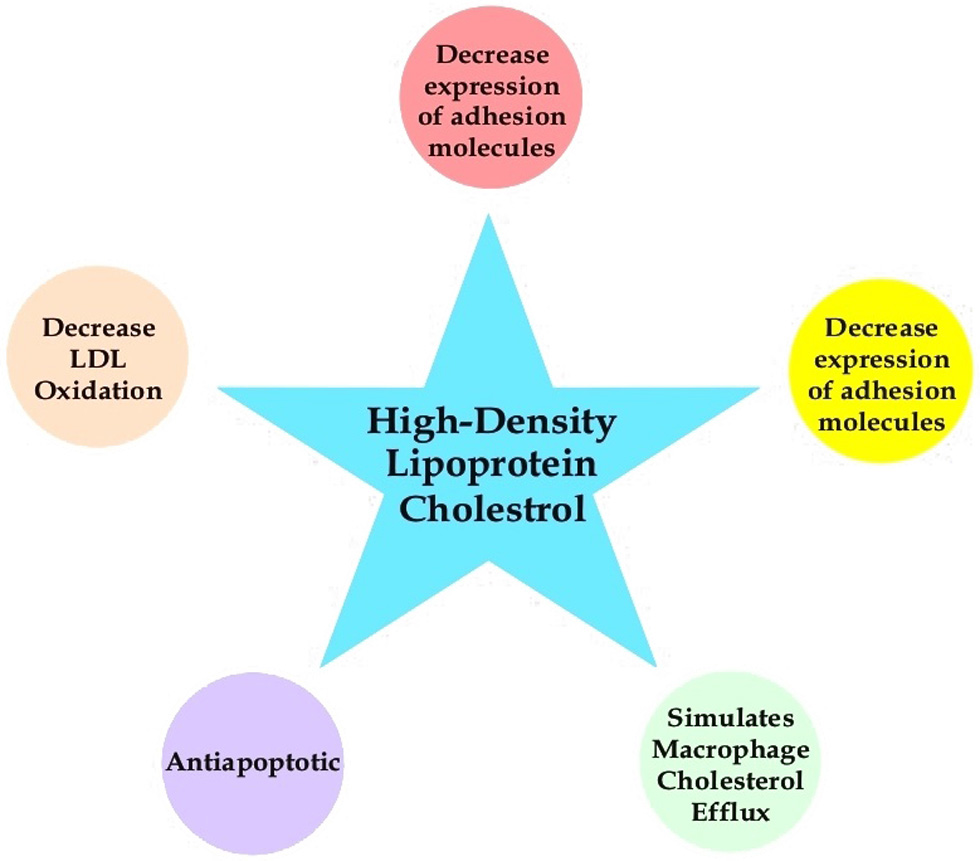
Figure 1. Literature Search Strategy and Selection Criteria.
| Journal of Food Bioactives, ISSN 2637-8752 print, 2637-8779 online |
| Journal website www.isnff-jfb.com |
Review
Volume 27, September 2024, pages 44-57
Integrated review of cardiometabolic biomarkers and dietary nutrients
Figures




Tables
| Drug | Effects | Common side effects | Working Mechanism |
|---|---|---|---|
| Statins [3-hydroxy-3-methylglutaryl-coenzyme-A (HMG-CoA) reductase inhibitors] | Lower the level of LDL cholesterol in the blood. | Headache, dizziness, feeling sick, feeling unusually tired or physically weak, digestive system problems like constipation, diarrhoea, indigestion or farting, muscle pain, sleep problem, low blood platelet count. | Inhibiting the enzyme HMG-CoA reductase. LDL and LDL precursors are cleared from the circulation due to the resulting reduction in hepatocyte cholesterol concentration. Inhibit the hepatic synthesis of apolipoprotein B-100 and decrease the synthesis and secretion of triacylglycerols-rich lipoproteins (Maron et al., 2000; Blum et al., 2004). |
| Proprotein convertase subtilisin/kexin type 9 (PCSK9) inhibitors | Lower the level of LDL cholesterol | flu-like symptoms such as cold, nausea, back and joint pain, muscle pain | Block PCSK9 proteins from breaking down LDL receptors (Rosenson et al., 2019; Sabatine, 2019) |
| Fibric Acid derivatives (fibrates)- Clofibrate (Atromid-S®), Fenofibrate (TriCor®, Fibricor®, Lofibra®), Gemfibrozil (Lopid®). | Decrease triacylglycerols, Increase HDL cholesterol, Lower total cholesterol | Abdominal pain, Constipation, Diarrhoea, Dizziness, Headaches, Leg cramps. | Activate peroxisome proliferator-activated receptors (PPARs), Apolipoproteins A-I and A-II are produced by transcriptional induction of PPAR-α, thereby mediating fibrate action on HDL cholesterol levels. PPAR stimulates lipoprotein lipase-mediated lipolysis by lowering hepatic apoC-III production. By stimulating fatty acid uptake, acyl-coA conversion, and catabolism via the β-oxidation pathways, fibrates decrease VLDL production, as well as fatty acids and triacylglycerols synthesis (Kim and Kim, 2020; Wang et al., 2022) |
| Bile acid sequestrants (bile acid resins) | Lower the level of LDL cholesterol | Constipation, Abdominal pain, Bloating, Vomiting, Diarrhoea, Weight loss, Excessive passage of gas (flatulence), Heartburn, Gallstones | Binding bile acids to sequestrants prevents their reabsorption in the intestines. The liver produces more bile acids as a result of this disruption in bile acid circulation between the liver and gut. In order to reduce intracellular cholesterol (LDL), the liver produces bile acids by metabolising cholesterol (LDL) present in the cells. In addition to increasing levels of good cholesterol and high-density lipoprotein, bile acid sequestrants may promote apoprotein A1 synthesis (Ticho et al., 2019; Fiorucci et al., 2021). |
| Nicotinic acid (niacin) | Decreases triacylglycerol and low-density lipoprotein cholesterol (LDL-C) and increases high-density lipoprotein cholesterol (HDL-C) levels | Severe skin flushing combined with dizziness, Rapid heartbeat, Itching, Nausea and vomiting, Abdominal pain, Diarrhoea, Gout, Liver damage, Diabetes | A triacylglycerol and very-low-density lipoprotein (VLDL) metabolic effect of this drug is mediated by its antilipolytic effects (Hamoud et al., 2013; Lukasova et al., 2011) |
| Selective cholesterol absorption inhibitors | Reduce Total Cholesterol level | Stomach ache, Diarrhoea, Tiredness, Headache. | Inhibits the absorption of biliary and dietary cholesterol from the small intestine without affecting the absorption of fat-soluble vitamins, triacylglycerols, or bile acids (Sudhop et al., 2002; Shulpekova et al., 2022) |
| Adenosine triphosphate-citrate lyase (ACL) inhibitors | Reduces LDL | Hyperuricemia (high amount of uric acid in the blood), Atrial fibrillation (irregular and fast beats seen in the upper chambers of the heart), Increase in liver enzymes, Difficulty in passing urine, Hypersensitivity reaction, Tendon damage, Leukocytopenia (decrease in white blood cells) | The inhibition of ACL inhibits the HMG-CoA enzyme. The cholesterol biosynthesis pathway in the liver relies on HMG-CoA enzyme for cholesterol formation (Feng et al., 2020; Pinkosky et al., 2016) |
| S.No. | Food/Food Additives | Major Bioactive Compounds | Lipid Biomarker of Cardiovascular disease | Mechanism Of Action | Reference |
|---|---|---|---|---|---|
| 1 | Apple | Quercetin-3-galactoside, quercetin-3-glucoside, quercetin-3-rhamnoside, catechin, epicatechin, procyanidin, cyanidin-3-galactoside, coumaric acid, chlorogenic acid, gallic acid, and phloridzin | Fasting plasma biomarkers of inflammation (primary outcome), endotoxemia, carbohydrate and lipid metabolism (glucose, insulin, triacylglycerol; secondary outcomes), and peripheral blood mononuclear cell (PBMC)-secreted cytokines (secondary outcome | Modulated postprandial plasma IFN-γ and total antioxidant capacity. In unstimulated and lipopolysaccharide (LPS)-stimulated peripheral blood mononuclear cells (PBMC), apples reduced secreted IL-6 and TNF-α, Increased IL-4, as well as decreased Granulocyte-macrophage colony-stimulating factor and IL-17 in unstimulated PBMC and Granulocyte colony stimulating factor in LPS-stimulated PBMC | (Liddle et al., 2021a; Liddle et al., 2021b ) |
| 2 | Almond | Glutamic acid, Tryptophan, Threonine, Isoleucine, Leucine,Arginine,Phenylalanine, Alanine, Glycine, Proline, Serine | Reduces adiposity, glycemic control, and the lipid profile | Decreased total cholesterol, low-density lipoprotein cholesterol, and the ratio of low-density lipoprotein cholesterol to high-density lipoprotein cholesterol | (Li et al., 2011;Bolling, 2017) |
| 3 | Avocado | Choline, niacin, pantothenic acid, riboflavin, lutein/zeaxanthin, vitamin A, vitamin C, vitamin E, vitamin K1, folate, vitamin B-6, | triacylglycerols, LDL oxidation, small atherogenic LDL particles and promoting postprandial vascular endothelial health | Modulating TNF-α, Reducing sub-class lipoprotein concentrations, lower concentrations of triacylglycerol-rich lipoproteins and higher concentrations of larger high-density lipoprotein (HDL) | (Park et al., 2018; Dreher et al., 2021) |
| 4 | Cinnamon | Cinnamaldehyde, cinnamate, cinnamic acid, and eugenol | Reduce plasma glucose , Reactive oxygen species | Inhibit α-glucosidase and control hyperglycemia, Enhancing insulin sensitivity and insulin secretion; regulating the enzyme activity involved in glucose; regulating glucose metabolism in the liver, adipose tissue and muscle; ameliorating oxidative stress and inflammation to protect islet cells | (Wariyapperuma et al., 2020; Shang et al., 2021) |
| 5 | Flaxseed | Hydroxybenzoic acids, hydroxycinnamic acids, and lignans, gallic acid and syringic acid | Total cholesterol and non-high-density lipoprotein cholesterol | Decreased IL-6 and MDA levels, and increased TAC,Serum apolipoprotein A-1 and apolipoprotein B , Reduce plasma lipoprotein-associated phospholipase A2 (Lp-PLA2) | (Tamtaji et al., 2020; Lucas et al., 2002; Khandouzi et al., 2022) |
| 6 | Garlic | Diallyl thiosulfonate (allicin), diallyl sulphide (DAS), diallyl disulfide (DADS), diallyl trisulfide (DATS), E/Z-ajoene, S-allyl-cysteine (SAC), and S-allyl-cysteine sulfoxide (alliin) | Positive impact on vascular endothelial and platelet function, lowering effect on triacylglycerols | Reduced postprandial triacylglycerols, Modulate IL-6, beneficial effect on inflammation, enhancing the phosphorylation of AMP-activated protein kinase (AMPK) | (Asgharpour et al., 2021;Wlosinska et al., 2021) |
| 7 | Ginger | Gingerols, shogaols, zingiberene, zingerone, paradols | Reduce fasting plasma glucose, HbA1C, insulin, HOMA, triacylglycerols, total cholesterol, CRP and PGE2 | Inhibits reactive oxygen species (ROS), inducible nitric oxide synthase (iNOS), superoxide dismutase (SODs), glutathione, and heme oxygenase, increased activity of the liver enzyme CYP7A1 and decreased mRNA levels of intestinal cholesterol absorption proteins such as MTP, ACAT2, and NPC1L1 | (Roudsari et al., 2021; Lei et al., 2014; Arablou et al., 2014) |
| 8 | Green tea | 5-N-ethylglutamine, Glutamic acid, tryptophan, Glycine, serine, aspartic acid, tyrosine, valine, leucine, Threonine, arginine, and lysine | lowers LDL cholesterol and TC, Reduces triacylglycerols | Interfere with the emulsification, digestion, and micellar solubilization of lipids | (Xu et al., 2020; Zheng et al., 2011) |
| PI | Country | Diseases | Study Design | Dietary Intake | Number of participant and (age group in years) | Sample | Dose | Follow-Up Time (YY, MM, DD) | Finding, |
|---|---|---|---|---|---|---|---|---|---|
| CVD- Cardiovascular Disease, FBS-fasting blood sugar, MetS- Metabolic Syndrome, PAD- Peripheral Arterial Disease, PI- Principal Investigator, T2D-Type 2 Diabetes. | |||||||||
| Danyelle M Liddle & Xinjie Lin (Liddle et al., 2021a; Liddle et al., 2021b) | Canada | MetS | Randomized, crossover trial | Apples | 48 (18–75) | Blood sample | 3 apple/d (∼200 g/d) | 06 weeks | Modulated postprandial plasma IFN-γ, reduced secreted IL-6 and TNF-α, increased IL-4, decreased GM-CSF |
| Jen-Fang Liu (Chen et al., 2017) | Taiwan, China | T2D | Randomized, crossover trial | Almond | 40 (40–70) | Blood and urine samples | (∼60 g/d) | 12 weeks | Decreased post-interventional fasting serum glucose and HbA1c, Improve glycemic status, No effects on Mean total and LDL-cholesterol concentrations |
| Britt Burton-Freeman (Zhang et al., 2022) | United States | MetS | Randomized, Single-center, 2-arm, controlled, 12-wk parallel trial | Avocado | 124 (25–65) | Blood sample | 1 Avocado/d | 12 weeks | Improved glucose control and reduced biomarkers of cardiometabolic risk, C-reactive protein was significantly lower |
| Anoop Misra (Gupta Jain et al., 2017) | India | MetS | Double blind randomized control trial | Cinnamon | 116 (25–65) | Blood sample | 3 g/day | 16 weeks | Decrease in fasting blood glucose (mmol/L), glycosylated haemoglobin (mmol/mol), waist circumference (cm), and body mass index (kg/m2), significantly improvement in waist-hip ratio, blood pressure, serum total cholesterol, low-density lipoprotein cholesterol, serum triacylglycerols, and high-density lipoprotein cholesterol. |
| Grant Pierce (Edel et al., 2015; Caligiuri et al., 2014; Caligiuri et al., 2016) | Canada | PAD | Double-blind, randomized, placebo-controlled trial | Flax Seed | 58 (40–100) | Blood sample | 30 g/d | 1 year | Reduce total cholesterol and LDL cholesterol, decreased blood pressure |
| Matthew Budoff (Matsumoto et al., 2016) | United States | MetS | Double-blind, randomized, placebo-controlled trial | Garlic | 55 (40–65) | Cardiac computed tomography angiography, carotid ultrasound | 2,400 mg/d | 1 year | Significantly reduced low-attenuation plaque, |
| Azita Hekmatdoost (Rahimlou et al.,2019) | Iran | MetS | Randomized controlled clinical trial | Ginger | 37 (18–70) | Blood sample | 2 g/day | 12 weeks | Modulatory effects on TAG, FBS, and insulin resistance |
| Richard Bruno (Sapper et al., 2016) | United States | CVD, Hyperglycemia | Double-blind, randomized, controlled, crossover study | Green tea | 15 (18−30) | Blood sample | 3 cups/day | 3 hour | Modulate Postprandial hyperglycemia |